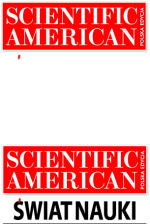 2006
2006
 2008
2008
 2010
2010
 2012
2012
 2014
2014



 |
What harms Western corn rootworm? – research on corn pest
‘Digestive enzyme inhibitors as an efficient tool in reducing the population of the Western corn rootworm (Diabrotica virgifera virgifera)’
Sławomir Drzewiecki1, Paweł Bereś2 - authors of photographs, On the top – male of Western corn rootworm (Diabrotica virgifera LeConte) on the flower silks of maize (Paweł Bereś) Start line – beetle of Western corn rootworm (Diabrotica virgifera LeConte) at the beginning of flight (Sławomir Drzewiecki)
|

|
Description popularizing the research project
Many of us have just managed to forget about the infestation of Colorado potato beetle that plundered Polish plantations in the second half of the 20th century. Notorious ‘subbotniks’, during which teenagers and children collected laboriously the striped beetles and their larvae from the potato plants, have been forgotten too. Not so long ago there were voices claiming they were a political issue. We have just dealt with the infestation of potato beetle and a new invader came from across the Atlantic with a taste for another plant – corn. The Western corn rootworm is also a beetle. Despite the fact that it is a close relative of the potato beetles, they do not look alike. It is much smaller, no longer than 5 millimetres. Because of the minute size and their biology, the fight against the pest glutton is harder than against potato beetles. Larvae of corn rootworm live underground hidden from human eye and there they wreak havoc among the roots of corn plants. Finally, the plants fade and fall over. Adult beetles feed on green parts of the plants, choosing the most delicate and richest in nutrients parts – flowers and fresh kernels. In such a situation, an unknown author wrote: ‘Five little lady bugs, all red and black I clapped my hands and shouted, and they all flew back!’ Scientists do not sit idly. From the very moment when the first observations of the pest were made they have been working to find weak spots of the insects, their stomachs, and taste. In laboratories, they work on the food preferences of the pest. In vials, new solutions of pesticides are tested. Conference rooms are filled with discussions and experiences are exchanged to stop further infestations and limit yield losses. The cornfields turned into battlefields where farmers and scientists wage war against the quite charming pest. Only the spirit of the Colorado beetle, once battled and defeated, hovers over the battleground, kept at bay. Still…
Abstract
One of the project objectives, apart from investigating the activity profile of digestive enzymes in the middle intestine of Diabrotica v. virgifera LeConte beetles, was to analyze the food preferences of the adult form with respect to fodder maize cultivars of different earliness, with particular consideration of changes in the beetle population versus changing developmental stages of the host plant. In addition, detailed dynamics of the occurrence of D. virgifera were identified for various types of traps with pheromones and with food attractants. The use of these traps in agricultural practice was evaluated. The field studies carried out on experimental plots of the IPP demonstrated that the presence of D. virgifera beetles on maize plants is largely determined by the availability of the most preferred food, i.e. pollen and fresh silk. Therefore, adult pest forms infested the earliest maize cultivars first. As plant development advanced, beetles migrated to later-maturing cultivars, which ensured availability of the most nutritious food. The detailed analysis of the occurrence of beetles on maize varieties of different earliness and in traps with pheromones and food attractants helps determine more precisely occurrence dates and population size of adult pests within the maize vegetation season. The first pests usually infested plants in the first half of July. The population peak was usually recorded in mid-August, and the feeding ended not later than in mid-October.
Patronat honorowy
Leszek Jodliński
Dyrektor Muzeum Śląskiego w Katowicach
Zygmunt Łukaszczyk
Wojewoda Śląski
Jan Malicki
Biblioteka Śląska
Piotr Uszok
Prezydent Katowic
Adam Matusiewicz
Marszałek Województwa Śląskiego








 Say ‘No’ to the pests! – sprayer fit for chemical application in high crops (Sławomir Drzewiecki)
Say ‘No’ to the pests! – sprayer fit for chemical application in high crops (Sławomir Drzewiecki)







